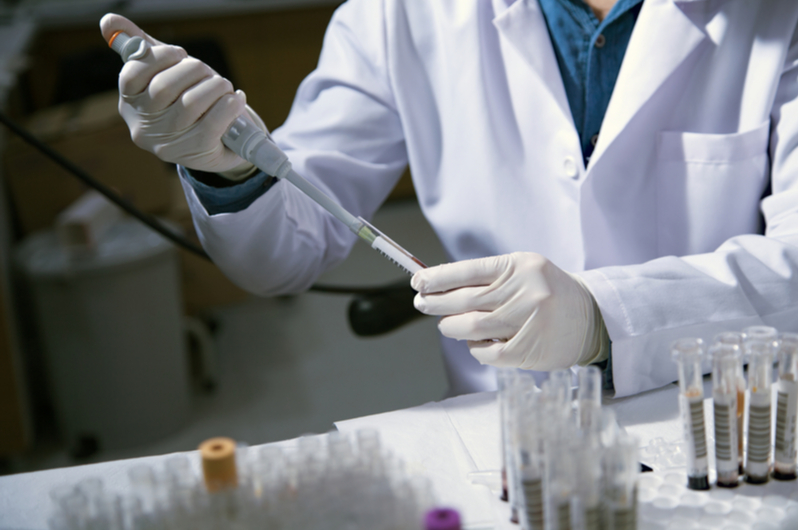Start Your Career As A Phlebotomy Technician
Phlebotomy technicians work with patients and perform blood tests. Getting certified takes as little as 4 months. Start your new career faster.
Phlebotomy is the process of drawing blood from a vein. In the medical community, phlebotomy is a common practice, since many tests rely on blood samples. Blood tests are performed by phlebotomy technicians. The majority of phlebotomy technicians work in hospitals or medical labs, but some work with other medical providers to collect blood samples from patients who have a difficult time leaving their homes.
The main method to collect blood is known as venipuncture. This involves using a needle to withdraw blood. While the bulk of phlebotomy training focuses on this technique, there are other important skills to succeed as a phlebotomy technician. Phlebotomy technicians are highly sought after in the medical community. According to the Bureau of Labor Statistics, the demand for phlebotomy technicians is expected to increase nearly 20 percent over the next ten years. Phlebotomy technicians make an average of $16 per hour.
Becoming a Phlebotomy Technician
There are only a few educational requirements to become a phlebotomy technician. In most states, it takes less than a year to finish all the necessary training. You do not need a medical degree to become a phlebotomy technician, but you must complete the necessary certification courses. In order to sign up for a phlebotomy technician program, you must have either a high school diploma or a GED. There are no age requirements, so you can enroll in a phlebotomy technician course right after high school.
Technician courses are normally taught at either vocational schools or community college. The lessons focus on a number of subjects, including:
-
Venipuncture and other blood collection procedures.
-
Using and sterilizing blood collecting equipment.
-
Basic medical terminology.
-
Working with patients, including how to calm scared or nervous individuals.
If you are having trouble finding lessons, you can search for accredited programs through the National Accrediting Agency for Clinical Laboratory Sciences (NAACLS). The length of each program varies, with some only taking two months to complete, while others run for the entire year. The cost of the program also changes depending on where you attend classes. Typically, a course costs between $1,000 and $3,000.
Online Classes
There are many phlebotomy technician programs taught online. These classes provide all the necessary knowledge to work as a technician. The biggest difference between in-person and online courses is the practical experience. In-person classes give you the chance to practice performing venipuncture, and also give you the opportunity to get clinical hours where you work with patients. Because being a phlebotomy technician largely relies on practical experience, in-person classes are recommended over online classes. However, if you are able to get clinical experience from another source, you may benefit more from taking an online program.
Phlebotomy Certification
Once you complete your phlebotomy training, the next step is to take the certification exam. In some states, you do not technically need certification to work as a phlebotomy technician. However, the majority of employers only hire applicants who have the necessary certification. In addition to completing a phlebotomy education course, you must be CPR certified. Some states also require you to complete a number of clinical training hours. Many of the longer phlebotomy courses offer clinical training as part of the classes. Otherwise, you must speak with a hospital or physicians office to get the necessary experience.
When you meet all the requirements, you must complete the certification exam. Each state uses a slightly different exam. The test has both written questions and a practical element. You must pay a fee each time you take the test, with the cost ranging from $60 to $200, based on where you live.
How long you are certified also varies based on your state. While you are not required to get recertified after completing your initial certification, it is commonly required by medical employers. The recertification test is not as lengthy as the base certification exam.
University of Alaska
The University of Alaska is one of the top-rated schools for phlebotomy technicians. It is one of the longer programs, lasting for the entire year, but it includes two separate clinical portions. It is also one of the more expensive options. If you live in Alaska, tuition is roughly $1750, but it costs as much as $6,000 for non-residents. There are options for both online and in-person classes. There are also some hybrid options, allowing you to complete the coursework online, but take the practical portions in-person.
Abrams College
If you want to quickly complete your phlebotomy training, Abrams College is an excellent choice. The phlebotomy program is taught over the course of two weeks, with options available for both daytime and evening classes. The program also offers training in either a clinical laboratory or hospital, giving you the chance to get real world experience.
Santa Fe College
Santa Fe College divides their phlebotomy technician course into two programs, each taught over the course of a semester. The first portion of the program includes 60 hours of classroom instruction. The second semester is much longer, consisting of 105 hours of clinical rotations. This program is a good choice for students who enjoy a thorough program taught in a more relaxed fashion compared to some of the shorter phlebotomy technician programs.
